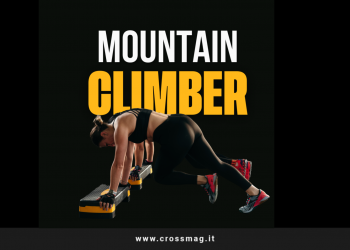- Compound exercises are great for stimulating muscle growth; hitting more than one muscle at the same time not only provides the muscle fibers with the stimulus to increase in size, but also triggers processes that promote the recovery and the results.
Lo squatting is a fundamental exercise, which focuses on quadriceps e buttocks, but there are some variations that also involve other muscles; among these is the split squat, which stimulates the lower body, but also the abdominal muscles, increasing the force overall functional.
Index
Muscles involved
The muscles involved in performing the split squat are:
- Quadriceps
- Buttocks
- abdominal
- Oblique abs.
Split squat benefits
Split squat targets the same muscles as the classic squat, then all the muscles of the lower part, with particular focus on quadriceps and glutes; however, adopting a split stance focuses on one side of the body at a time.
In this way it is possible iidentify and work on any imbalances in body strength, so that when you return to the classic squat, both sides are well balanced.
Another advantage of the split position is that yes creates more tension in the abs, which must be kept engaged during the movement to ensure proper form and increase core strength.
How to perform the split squat
The split squat is an exercise that satisfies many needs; It is one of best exercises to perform with your own body weight, is suitable for all fitness levels, increases functional strength and targets multiple lower body muscle groups, as well as working the core.
It's perfect as a leg and core exercise. Let's see in detail how it is done:
- stand with feet parallel to hips and hands on hips
- shift your weight onto your front leg and keep your torso straight as you lower yourself until both legs form a 90-degree angle
- contract the buttocks and return to the starting position by leveraging the front foot
- perform all repetitions on one side and then switch to the other.
variants
At the beginning, for beginners, it is good to familiarize yourself with the classic, no-weight split squat; when you are sure that you have learned the correct movement well, you can increase the difficulty by adding some weight.
You can hold a dumbbell in each hand or a kettlebell against your chest, but the most common progression is with the barbell.
- Barbell Split Squats: the starting position is the same as the classic split squat with the barbell firmly behind your back; shift your weight onto your front leg with your torso straight and lower yourself to form a 90-degree angle; always keeping the buttocks contracted, return to the starting position and repeat on the other side.
And you, have you ever performed the split squat during your leg day? Let us know in the comments and remember to follow us on our telegram channel
SUBSCRIBE HERE TO THE TELEGRAM CHANNEL












